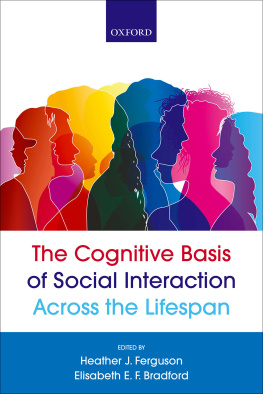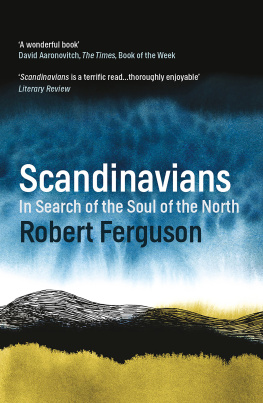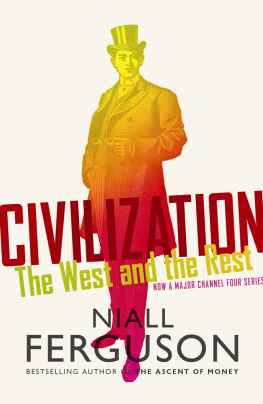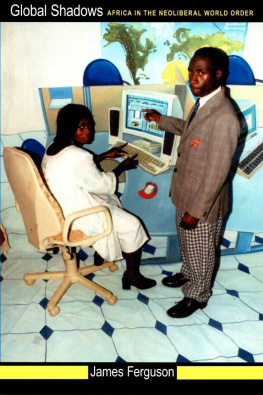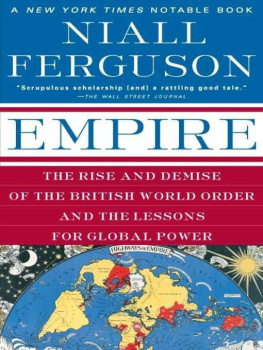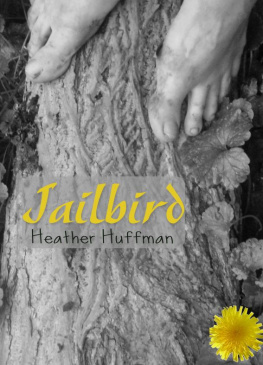Stanford University Press
Stanford, California
2018 by the Board of Trustees of the Leland Stanford Junior University. All rights reserved.
No part of this book may be reproduced or transmitted in any form or by any means, electronic or mechanical, including photocopying and recording, or in any information storage or retrieval system without the prior written permission of Stanford University Press.
Printed in the United States of America on acid-free, archival-quality paper
Library of Congress Cataloging-in-Publication Data
Names: Ferguson, Heather L., author.
Title: The proper order of things : language, power, and law in Ottoman administrative discourses / Heather L. Ferguson.
Description: Stanford, California : Stanford University Press, 2018. | Includes bibliographical references and index.
Identifiers: LCCN 2017050465 (print) | LCCN 2017053018 (ebook) | ISBN 9781503605534 (electronic) | ISBN 9781503603561 (cloth : alk. paper)
Subjects: LCSH: TurkeyHistoryOttoman Empire, 12881918. | Discourse analysisPolitical aspectsTurkeyHistory. | OrderPolitical aspectsTurkeyHistory. | Administrative lawTurkeyHistory. | TurkeyPolitics and government. | Imperialism.
Classification: LCC DR486 (ebook) | LCC DR486 .F48 2018 (print) | DDC 956/.015dc23
LC record available at https://lccn.loc.gov/2017050465
Cover image: Ahdname issued upon the accession of Mehmed III reaffirming the terms of Ottoman sovereignty within a genealogy of rule traced back to Selim I. Hungarian National Archives.
Cover design: Rob Ehle
Typeset by Bruce Lundquist in 10.25/15 Adobe Caslon Pro
THE PROPER ORDER OF THINGS
Language, Power, and Law in Ottoman Administrative Discourses
HEATHER L. FERGUSON
Stanford University Press
Stanford, California
CONTENTS
ACKNOWLEDGMENTS
All books contain within them an untold storyexactly what it took to transform a series of archival tours and piles of notes into a finished product. For most this is a tricky metamorphosis, and for me it required a community of supporters who believed the transformation was possible even when I could not. I owe a deep debt of gratitude to many who fulfilled this role throughout my academic journey and thus allowed me the opportunity to persevere. This books story begins with Abraham Marcus, who, during my time at the University of Texas at Austin, unwittingly instilled in me a love for the Ottoman past. Perhaps it had something to do with his instrumental oud playing, but more likely it was his determination to transform meticulous archival research into a portrait of Aleppos historical horizons, sadly now rent asunder by escalating crises. I may never forgive him for sending me on a journey that would take many years to complete, consuming eight consecutive summers with intensive Arabic, Turkish, and Ottoman language programs and involving archival tours without which I would never have experienced the beauty and the tragedy of being a historian.
My years in the history department at the University of California, Berkeley transformed my interdisciplinary background into a basis for historical inquiry. Leslie Peirce and Mary Elizabeth Berry, sometimes gently, sometimes urgently, forced me to look at what it meant to ask questions historically, and their voices lived on in my head as I labored over the sentences contained in these pages. It has certainly been a lesson in humility to recognize that my answers will perhaps never satisfy, but my ways of thinking and imagining have been expanded by their interventions. I often recused myself from history to the classrooms and offices of anthropologists, where William F. Hanks helped me tweak my understanding of the relationship between historical practices and linguistic forms. His creativity and indefatigable inquisitiveness continue to serve as models for me as I think through research problems and intellectual constructs. Undeniably, I would not still be among the academic fold were it not for the constancy and care of my mentor, Beshara Doumani. He took a chance on my idiosyncratic approach to history, instilled in me practical paleographic tools, and then sustained his passion for my potential as a scholar even when my own lapsed. With his own intellectual endeavors as a standard, I pushed to find my way through the administrative practices of the Ottoman Empire. Words will always fail to express my appreciation, for it was he who helped me across the divide.
Someone pessimistically told me early on that one had to choose between academia and life. I have now come to believe in the possibility of both, and for that I owe much to a community of supporters who believe in simplicity but act with passion. Joel Beinin acted as a mentor and guide from Stanford, sometimes in my darkest hours, and without him my transformation from student into scholar would never have happened. My community of supporters also includes Baki Tezcan, whose wide-ranging historical curiosity and generosity of spirit continues to inspire. The boundless historical curiosity of Linda Darling, her archival work ethic, and visionary approach to weaving the two together provide a model I can only hope to approximate. Guy Buraks voluminous knowledge of historical and contemporary scholarship and creative investigation of the past helped me to maintain an inquisitive approach to my own research even as the months slipped by. He often guided me to scholarship in wide-ranging regions and disciplines, and these threaded their way into the conceptual routes I adopted in this book. A onetime research project with Ira Lapidus turned into years of walks and talks in Berkeley gardens and Madrid museums, and his detailed comments on early drafts guided my approach to writing. Lena Salaymeh and Elyse Semerdjian frequently reminded me to stride forward with courage and commitment, and they also enabled me to see when it was time to finally let go. And this book would never have been written without almost daily contact with David Moshfegh, who is perhaps more grateful even than I to see this project finally materialize. He served as a sounding board, an intellectual interlocutor, and proved himself a master of turning tricky conceptual problems into witty prose.
Research for this book began in Istanbul in the summer of 2005 and has since taken me on many routes and sojourns through the city of Beirut and the coastal highlands of Lebanon, to fortress castles-turned-archives in Budapest and Simancas, and through paleographic conundrums and conceptual puzzles. I remain humbled by the rich and diverse resources that have often overwhelmed me in their immensity, and I would like to thank the staffs of Istanbuls Babakanlk Archives; Sleymaniye Library; Istanbul University Library; Topkap Palace Museum Archive and Library; the slam Aratrmalar Merkezi (SAM); and the Research Centre for Islamic History, Art and Culture (IRCICA). I am grateful for help from directors in the Tapu ve Kadastro Archives in Ankara and the National Library. While in Budapest, I used Turkish to communicate with Ottoman archivists in the National Archives of Hungary and pored over newly drafted catalogues of materials related to the Ottoman Empire. In Beirut I drank many cups of coffee with directors at the National Archives and was granted a personal tour of Charles Vs regal insignia at the archives in Simancas. My tours of places and documents were supported by grants from the American Research Institute in Turkey and the American Council of Learned Societies, as well as by generous faculty research grants from Claremont McKenna College and the Gould Center for Humanistic Studies. In addition, under the directorship of Robert Faggen, the Gould Center generously provided the means necessary to transform ideas into a printed book.



